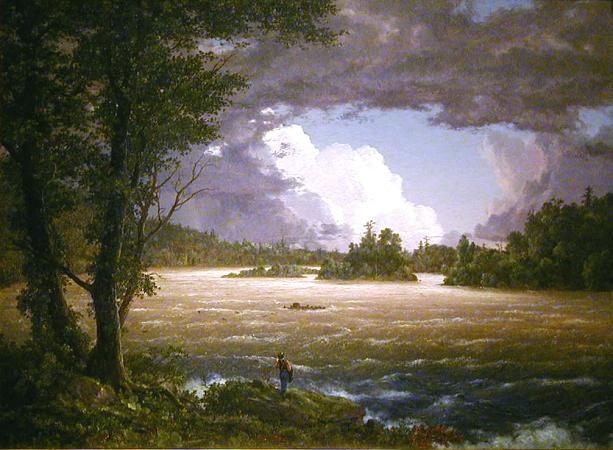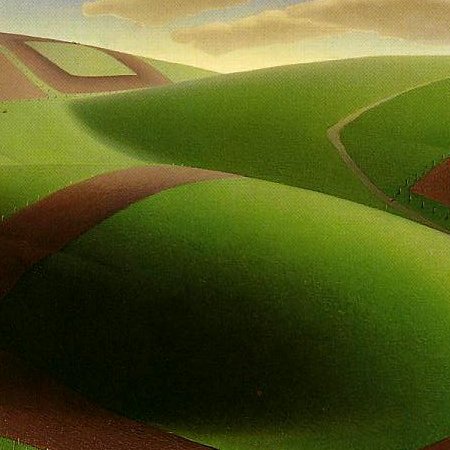Maryland. Maryland is a state in the Mid-Atlantic region of the United States. The Chesapeake Bay and its surrounding environment have been popular subjects for landscape painters such as Albert Bierstadt and William H. Bartlett. Artists like Thomas Birch and Francis Guy portrayed the state's bustling cities, such as Baltimore, emphasizing the busy harbors and maritime life. In the 20th century, artists such as Romare Bearden and Jacob Lawrence captured elements of African American history and culture in Baltimore, which was a hub for African American artists and intellectuals. Maryland borders Virginia to its south, West Virginia to its west, Pennsylvania to its north, Delaware and the Atlantic Ocean to its east, and the national capital of Washington, D.C. to the southwest. With a total area of 12,407 square miles, Maryland is the ninth-smallest state by land area, and its population of 6,177,224 ranks it the 19th-most populous state and the fifth-most densely populated. Maryland's capital is Annapolis, and the most populous city is Baltimore. Maryland's coastline was first explored by Europeans in the 16th century. Prior to that, it was inhabited by several Native American tribes, mostly the Algonquian peoples. As one of the original Thirteen Colonies, Maryland was founded by George Calvert, 1st Baron Baltimore, a Catholic convert who sought to provide a religious haven for Catholics persecuted in England. In 1632, Charles I of England granted Lord Baltimore a colonial charter, naming the colony after his wife, Henrietta Maria. In 1649, the Maryland General Assembly passed an Act Concerning Religion, which enshrined the principle of toleration. Religious strife was common in Maryland's early years, and Catholics remained a minority, albeit in greater numbers than in any other English colony. Maryland's early settlements and population centers clustered around waterways that empty into the Chesapeake Bay. Its economy was heavily plantation-based and centered mostly on the cultivation of tobacco. Demand for cheap labor from Maryland colonists led to the importation of numerous indentured servants and enslaved Africans. In 1760, Maryland's current boundaries took form following the settlement of a long-running border dispute with Pennsylvania. Many of its citizens played key political and military roles in the American Revolutionary War. Although it was a slave state, Maryland remained in the Union during the American Civil War, and its proximity to Washington D.C. and Virginia made it a significant strategic location. After the Civil War ended, Maryland took part in the Industrial Revolution, driven by its seaports, railroad networks, and mass immigration from Europe.
more...







